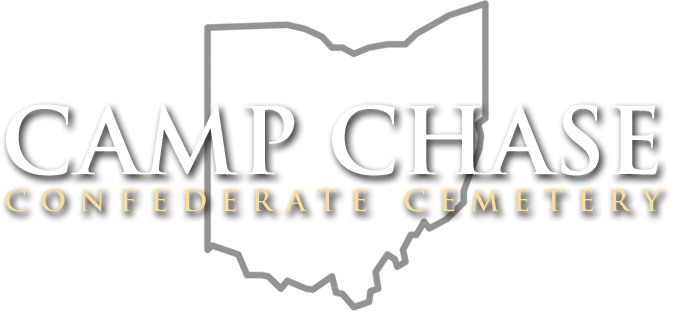Salmon Portland Chase and some facts of the 1857 Dred Scott Decision
Compiled by Dennis Ranney of the SCV and Joanie Jackson of the UDC
On Thursday, June 20, 1861 four miles west of Columbus, Ohio, a newly formed establishment to be used as a military staging and training camp was officially named Camp Chase. The camp was named in honor of Salmon Portland Chase who was born on January 13, 1808 in Cornish, New Hampshire. Chase’s father died when he was only nine years old and after his father’s death, Chase relocated and lived with his uncle, Philander Chase, in Ohio. In 1820, he briefly pursued studies in Worthington, Ohio, but would attend the Cincinnati College and later enroll and graduate from Dartmouth College in 1826. After graduation, Chase moved to the District of Columbia and studied law with admission to the bar in 1829.
Salmon P. Chase, along with others, prepared the Articles of Incorporation for the Spring Grove Cemetery located in Cincinnati, Ohio in late 1844. The Spring Grove Cemetery is the 3rd largest cemetery in the United States and is recognized as a US National Historic Landmark. The cemetery, and others to follow, were designed as “garden cemeteries” after the famous cemetery in Paris, le Pere-Lachaise. Spring Grove became the final resting place for many famous Americans, including Union General Joseph Hooker.
Eventually moving to Loveland, Hamilton County, Ohio, Chase was associated with the anti-slavery movement and through the court system defended many slaves. Because of this propensity for defending slaves, Chase at times was called the “Attorney General of Fugitive Slaves”.
Chase would be elected to the United States Senate representing Ohio from 1849 to 1855. He was elected as the first Republican and 23rd Governor of Ohio and served from 1856 to 1860. In 1860, Chase was a Republican candidate for President, but earned little support outside of Ohio. He briefly served again in the Senate from 1860-1861. In 1861, President Lincoln appointed Chase as Secretary of the Treasury and he served in that capacity until 1864.
On October 12, 1864, the Chief Justice of the Supreme Court, Roger B. Taney died. Taney was from Maryland and had been appointed to the court by then President Andrew Jackson. Taney is best known for his opinion of the Dred Scott decision in 1857. The eight justices could not have been more evenly matched insofar as sectional differences. There were four justices from northern states and four from southern states. The majority of justices from the southern states were slave owners. Although the United States Supreme Court had a 7-2 decision against Scott, it was Taney who was the Chief Justice and explained the decision and forever would be associated with slavery. The two dissenters of the decision were Benjamin Robbins Curtis of Massachusetts and John McLean of Ohio. Justice Curtis did make an interesting argument with his decision. Two other northerners Samuel Nelson of New York and Robert Cooper Grier of Pennsylvania sided with Taney and the majority. Because of Dred Scott’s notoriety after the decision money was exchanged and he became a free man. Dred Scott would die a free man in St. Louis, Missouri a year later in 1858.
After Taney’s death, Chase was sworn in as Chief Justice of the Supreme Court on Thursday, December 15, 1864, the first day of the Battle of Nashville, Tennessee. Shortly before his death, Chief Justice Chase was involved with the Slaughter-House Cases, efforts by the state of Louisiana to rectify unsanitary conditions created by slaughterhouses upstream on the Mississippi River from New Orleans. In the minority, Chase found that the majority ruling effectively rendered the 14th Constitutional Amendment a “vain and idle enactment”.
Salmon P. Chase died on May 7, 1873 of a stroke at New York City, New York. He was first interred at Oak Hill Cemetery in Washington, DC and later, in October 1886, re-interred at Spring Grove Cemetery in Cincinnati, Ohio. Former United States Chief Justice and the 27th President of the United States, William Howard Taft, dedicated the marble gravesite memorial to Salmon P. Chase on behalf of the American Bar Association on June 3, 1923.
Remembrances of Chase include the penning of “In God We Trust” on December 9, 1863, as it appears now on American currency. The first $1 American currency note in 1862 bears an image of Chase on the front. The largest denomination US currency, the $10,000 bill, has a Chase portrait on the front and was last printed in 1945. Many towns, cities, and one county in Kansas, facilities, buildings, and ships were named in honor of Chase. Although not directly affiliated with the bank, Chase National Bank was named in his honor.
Monty Chase a member of SCV Camp 1535 is a descendant of Salmon P. Chase.

